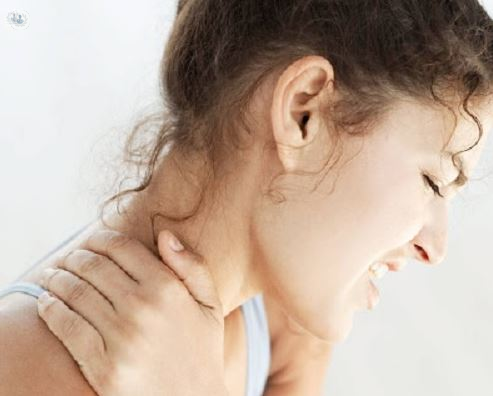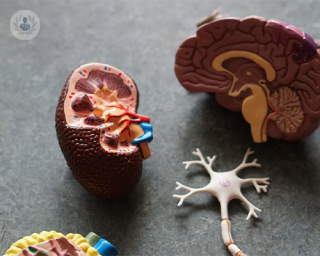Muscle stiffness
What is a muscle contracture?
A muscle contracture is, as its name indicates, a contraction of a muscle. The contraction of the muscle or one of its fibres is continuous and involuntary, such that the muscle is constantly tensed and prevents the person from performing everyday activities normally and without pain.
This problem is quite common and is not restricted to sportspeople. It is important to identify muscle contractures, to differentiate them from other issues and to treat them.
Muscle contractures can be distinguished according to when they appear:
- During effort: When we perform a physical activity, the body metabolises active substances and generates movement, and these substances become inactive or waste products (metabolites). If the effort is excessive, whether due to the physical task or to poor physical condition, the body does not clear away the metabolites in the bloodstream so pain and inflammation ensues.
- After effort: The muscle cannot return to the resting state. Sometimes, when a muscle has been subjected to a great physical effort, it is not able to return to the relaxed state.
- Residual: After a serious injury, surrounding muscles tend to contract, as a protective measure. Later, it may be the case that the surrounding muscles remain contracted even when the injury has resolved.
Prognosis
The condition is of mild severity but can be annoying. It may become worse if not duly treated. If treatment is delayed, it may be very complicated to regain the normal range of movement.
Symptoms of muscle contracture
Normally muscles contract then relax but in specific cases, the muscle does not relax and remains contracted, so the area remains hard and swollen. The symptoms are therefore a bulge, known as a “knot”, that can be felt.
The usual symptoms are pain and limitation of movement, with extent of limitation depending on the severity of the condition. Hence, we can distinguish four symptoms:
- pain, joint and muscle rigidity.
- reduced movements.
- muscle weakness.
- limited use of the affected area.
Testing for muscle contracture
Diagnosis is based on palpation of the affected muscle to detect any knots and any areas of higher tension. While moving their fingers, the specialist attempts to detect points of higher resistance, where muscle fibres are contracted. The specialist will also detect where you feel pain and if your movement has been restricted.
In certain cases, an X-ray of the affected area will be carried out to rule out a fracture.
What are the causes of muscle contractures?
Muscle contractures usually occur when the muscle performs an inappropriate activity, whether in intensity or function. For example, when we lift too much weight or when we perform a continuous effort over time. Some of the main causes are:
- cold: in cold conditions, a contracture may occur if sufficient warm-up is not done.
- excessive effort: as already mentioned, a sudden intense effort or a prolonged continuous effort may cause a contracture. And also if an inappropriate posture is maintained for a prolonged period of time. Sedentary people are more likely to have a contracture because the muscle is out of condition; similarly with sportspeople who do not prepare properly.
- emotional stress: due to accumulated tension.
- dehydration: lack of water and of other components such as magnesium, glucose and potassium, increase the likelihood of a contracture occurring, as these are important elements for the correct functioning of muscles.
- advanced age: elderly people lose elasticity and are more likely to develop this type of problem.
Can it be prevented?
As a preventive measure, you should always do a warm-up before physical activity, in order to prepare muscles. It is also useful to increase the intensity of the exercise in a gradual manner. Similarly, stretching exercises will prevent muscle contractures as they improve relaxation and recovery of muscles after the activity.
Other recommendations:
- Avoid repetitive movements: if this is not possible, it is recommended that every two hours, you take a break to perform stretching for five minutes in the area most affected by the repetition.
- Maintain a good posture and have appropriate equipment (chair, mattress, etc).
- Good muscle hygiene: activities like massages and heat application are positive for muscles; in addition to relieving tension, they also prevent the development of new contractures.
Treatment
It is inadvisable to attempt to treat muscle contractures yourself, given that the massage we perform or the medications we take may be inappropriate. It is recommended to see a specialist, who is able to classify the contracture and apply the most appropriate treatment.
- Muscle relaxants and anti-inflammatory agents . These drugs relax muscles and reduce contraction. They are useful against severe pain, but must always be prescribed by the doctor.
- Local heat. Leads to relaxation of the muscles and has an analgesic effect.
- Massages. Must always be performed by a clinically trained specialist such as a physiotherapist. Massages increase blood flow, which in turn improves the recovery of tissues and clears away metabolites, in addition to relaxing the muscles and reducing pain.





